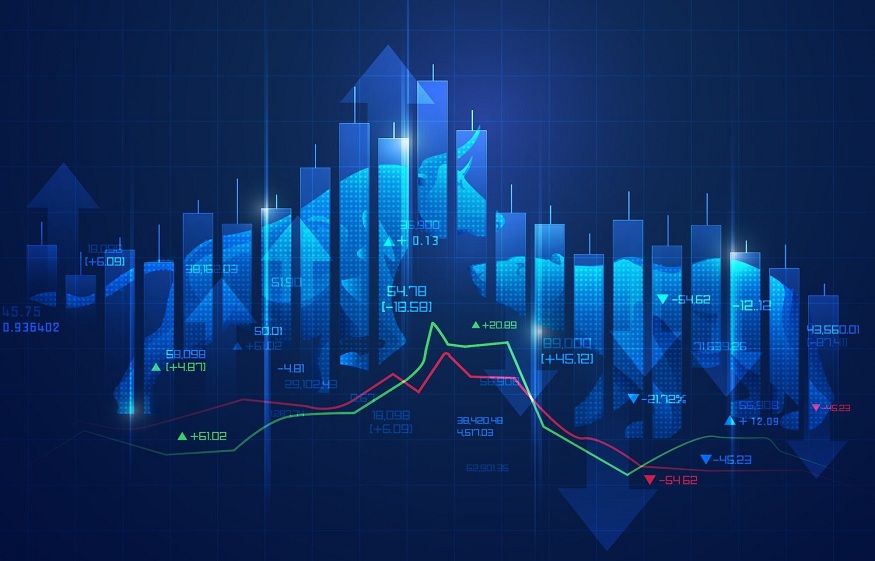Algorithmic trading has transformed the modern financial market, particularly high-frequency algorithmic trading (HFT). Trading HFT involves using advanced technology at incredibly fast speeds to make the most of small price differences that exist for only a short time. Additionally, it is characterized by high-speed algorithms, quick turnover rates, and short investment periods. The use of HFT offers advantages like optimized pricing and faster execution, but it also faces challenges related to regulation. In this article, let’s explore the world of high-frequency algorithmic trading and its working in detail, along with its advantages and disadvantages.
What Is Algorithmic Trading?
In the financial market, algorithmic trading involves using pre-programmed trading instructions to execute orders at high speed. Trading software is fed instructions based on time, volume, and price to execute orders. The trading software executes the order whenever the investor’s instructions are triggered in the market.
Mutual funds, hedge funds, insurance companies, banks, etc., use algorithmic trading to execute high volume trades that humans can’t do. Moreover, for investors, algorithmic trading lets them trade more in less time without dealing with emotions or mistakes.
What Is High-Frequency Algorithmic Trading?
High-Frequency Trading (HFT) is a subset of algorithmic trading, and Ultra HFT is a subset of HFT. HFT and Ultra HFT let traders profit from small price differentials that last for a short time.
High-frequency trading (HFT) is the most common algorithmic trading method. In HFT, trades are executed at high speeds using fast-frequency financial data and electronic trading tools.
A few of the most significant characteristics of HFT are high-speed algorithms, co-location, and short-term investment horizons. If you want to explore HFT, Share India is best algo trading platform in India.
How Does High-Frequency Trading Work?
In high-frequency trading, the higher the volume of trades, the higher the profits. This is a better option than holding stocks for the short term and waiting for prices to rise. If you’ve ever watched a stock, you know how fast it changes. For someone who does high-frequency trading, even a little price fluctuation becomes a profit.
A quantitative model makes all the portfolio allocation decisions in HFT. Basically, the models are fed specific information by the owners. And success comes from the model’s ability to process huge amounts of data, something a human can’t handle. Moreover, High-frequency traders compete to execute the most trades in the least amount of time.
Advantages Of High-Frequency Algorithmic Trading
Here are the advantages of High-Frequency Algorithmic Trading:
Good Value For Money
Algorithm trading yields the best price since trades are quickly timed to avoid excessive price swings.
Improved Accuracy
The chances of making a mistake are reduced when a machine handles a deal instead of a human. The human element heavily influences accuracy. Thus, precision improves when a computer algorithm is used.
Increase In Speed
Algorithms are prewritten and executed automatically. This increases the speed at which trades can be executed significantly.
Disadvantages Of High-Frequency Algorithmic Trading
Some of the disadvantages of High-Frequency Algorithmic Trading are:
Lack Of Regulation
Algorithms and software used in HFT are complex. Therefore, it becomes difficult to monitor and regulate high-frequency trading. Furthermore, scholars and finance professionals lack consensus on high-frequency trading. Thus, making HFT a controversial subject.
Replacement
HFT is criticized because it has replaced many brokers and dealers with software and algorithms. Additionally, it is considered a bad process as investing requires human intellect to make profits most of the time. For a comprehensive trading strategy, data and information are not enough.
One-sided Profits
High-frequency trading is not possible for retail investors due to their lack of infrastructure. Due to this, only large companies with the required infrastructure benefit from the strategy. Thus, the liquidity that arises is often called ‘Ghost liquidity.’
High-Frequency Trading Strategies
The following are some high-frequency trading strategies:
Market Making
In this strategy, investors or firms are ready to buy and sell shares at publicly quoted prices regularly. Using a predetermined set of high-frequency trading strategies, many high-frequency trading companies place limit orders to sell or buy.
Quote Stuffing
In high-frequency trading, this strategy involves quickly buying and selling many orders to create confusion in the market. The confusion causes the trading volume to rise, allowing high-frequency traders to get profitable trading opportunities.
Tick Trading
Under tick trading, computers monitor the flow of quotes and market information embedded in market data and trading volumes. Tick trading is to see when other HFT traders place big orders.
Statistical Arbitrage
This type of arbitrage aims to identify the price differences between different securities across different exchanges or markets. To trade liquid securities like bonds, stocks, currencies, futures, etc., high-frequency trading uses statistical arbitrage.
Conclusion
HFT is a type of high-speed algorithmic trading that uses advanced technology and algorithms to profit from price differences. While HFT offers advantages such as optimized pricing and faster execution, it also faces challenges related to regulation and replacing human brokers. You can use Share India’s algorithmic trading platform to explore high-frequency trading with the necessary technology and infrastructure. With Share India’s robust algorithmic tools and fast order execution, you can boost your trading performance.

